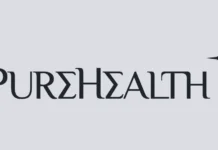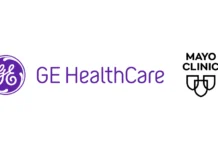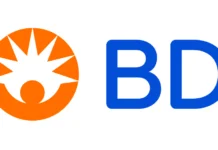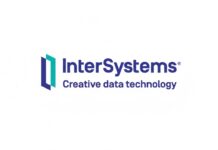The COVID-19 crisis brought the US healthcare system into stark public focus. While no question the pandemic has exposed the industry’s weaknesses, it also exposed its strengths and its ability to innovate.
Overall, I must say the healthcare system in America has performed very well and the hardworking professionals who comprise it are to be congratulated.
However, and what is critically important in looking ahead – COVID-19 also initiated and accelerated consumer behavioral changes that are here to stay – Health care providers need to be aware of these trends and leverage them to their utmost advantage.
As the US healthcare system shifts from crisis into recovery mode, catches up on deferred elective procedures and ultimately, recovers financially, it is important to imagine what a post COVID-19 “new normal” might look like. The pandemic exposed unacceptable weakness in the healthcare supply chain, yes, with basic PPE, medications, chemicals, etc. becoming quickly unavailable, but it also primed the population to accept remote delivery of healthcare services.
In 2021, we remain in crisis. However, this is a crisis that should not go to waste but rather drive much needed operational changes for our future.
WANTED: Improvements to the Supply Chain, for both Diversity and Cost
While the 2020 medical supply crisis should be a sufficient-enough reason to address the problem at a governmental and national security level, individual healthcare provider organizations clearly cannot rely on that alone and should act independently and quickly.
Hospitals and other large healthcare providing organizations have historically been far from world class in supply chain management and strategic sourcing. Rather than building the skills required, they have often outsourced the function to Group Purchasing Organizations (GPOs), assuming they will solve it for them.
GPOs however have obvious conflicts of interest in how they get compensated for their services; pricing is not transparent, and they do not drive innovation for their buy-side clients. Purchasing economies of scale are overestimated and do not create sufficient conditions for supply chain excellence. While GPOs can have benefits for smaller hospitals, their rates are mostly semi-public volume discount schedules, whereas the best supplier deals are always customer-specific, privately negotiated and confidential.
Healthcare providers must create strategic sourcing capabilities on par with any other industry, given the enormous volume of strategic purchases that they make. The lack of supply chain robustness exposed in 2020 creates an impetus to act, but the analytical work required to design and source a targeted supply chain will also result in significant cost savings in future.
Best practices here involve standardizing demand specifications, designing appropriately disaggregated pricing bases, conducting rigorous bidding processes, and negotiating and contracting for long-term competitive advantage and incentive alignment.
Few healthcare provider organizations do this today nor have the capability in house. This scenario must improve.
The Time to Embrace Remote Service Delivery Options Is Now
Healthcare providers responded to COVID-19 by quickly offering long overdue remote service delivery options that enhanced patient convenience and safety. These innovations are certainly here to stay, and providers should embrace new delivery models post COVID-19.
Since much of the knowledge workforce is now able to work remotely, certain segments will certainly continue to do so in the long-term and healthcare providers should accommodate for this. Smart providers will embrace this trend, make the necessary investments and use remote service delivery as a competitive tool to reduce costs as well as enhance patient utility.
The Key Customer: Employers
Employers are the ultimate economic customers of healthcare providers. They are constantly looking for efficiencies and will take advantage of geographical arbitrage opportunities in both pay rates and medical benefits.
Employers also have more degrees of freedom to manage their workforces post COVID-19, as knowledge work has become location independent. As they manage these geographically dispersed workforces, they will increasingly focus on taking advantage of the geographic differences in healthcare services prices, as well as utilization patterns (i.e., employees self-selecting into healthy vs. unhealthy lifestyles / cities).
Insurance carriers have historically focused on creating national networks that they sell to employers in big clusters, e.g. regions where an employer has employees; now, workforce networks are becoming more dispersed and will require a different approach.
In 2021, Employers Demand Greater Transparency
While the HHS Rule “Requiring Health Insurers to Disclose Price and Cost-Sharing Information” that came into effect in January 2021 will make for some interesting headlines about wide price ranges for identical services, it will not create an efficient market for healthcare. Patients won’t care about “shoppable” prices for services they don’t really pay for; however, the HHS Rule provides an impetus for employers to finally look under the covers of healthcare costs and ask the right questions.
Healthcare sourcing efforts traditionally relied on intermediaries such as benefits consultants or health insurance companies and involved varying degrees of bundling of administrative services, healthcare services, pharma, and risk wrappers. The demand profiles are usually represented as sets of demographic risk pools with group preference options for plan-design features such as PPO, HMO, co-pays, etc. This approach is fundamentally flawed, as it does not uncover the actual cost of services at a granular level and is therefore not consistent with good strategic sourcing practices that are commonly utilized for strategically important purchases.
Analytically, health care sourcing is a network design problem: Providers deliver services to patients that are time and location dependent, while patients have service level requirements (e.g., elective vs. acute) and customer preferences (i.e. provider choice, co-pays and coverage limits.) which are all subject to performance requirements. Like any network design solution, the cost of each service, response time, service levels, and locations are input variables to the optimization and must be determined via granular competitive sourcing directly from providers, including hospitals, physician groups, pharma.
This approach is not about ‘direct employer contracting vs. insurance intermediated’. It does not presume a solution, but rather advocates for a more rigorous and transparent analytical perspective.
For employers, it’s the recognition that HR benefits are strategic and therefore must be managed proactively. For providers it’s the recognition that their supply chain is not robust, substantial cost savings are available and that GPOs are not the solution.
While this is nothing new, the market seems to be ready for a new approach. The confluence of remote working and remote healthcare delivery combined with HHS transparency rules and the pervasive availability of sophisticated analytical techniques, will drive employers to treat healthcare more like any other critical service purchase.
Providers that have ultimately read the tea leaves of 2020 should be in pole position in 2021 within the industry, having a strong understanding of their costs, risks yet moreover opportunities, well poised with relative competitive advantage.
About Author
Hans Dau is a financial and equity analyst and serves as the CEO of the Mitchell Madison Group (MMG).


















